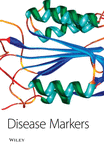Serum Surfactant Protein D: Biomarker of Chronic Obstructive Pulmonary Disease
Abstract
Background: Surfactant protein D (SP-D) is a lung-specific protein proposed to predict clinical outcomes in patients with chronic obstructive pulmonary disease (COPD). However, the changes in serum SP-D during acute exacerbation (AECOPD) episodes and the relationship of serum SP-D with the overall severity of the disease in stable COPD (SCOPD) remain unclear.
Methods: Serum SP-D levels were analyzed in three groups, including AECOPD (n=40), SCOPD (n=71), and controls (n=60). In AECOPD group, serum SP-D levels were determined at 1, 5, 14, and 30 days post-exacerbation. In SCOPD group, BODE (body mass index, airflow obstruction, dyspnea, exercise capacity) index was evaluated for severity assessment.
Results: Serum SP-D levels were sequentially elevated from the controls to the SCOPD, and then to the AECOPD (p < 0.001). During an AECOPD episode, the raised serum SP-D levels subsided at day 5 (p > 0.05), fell markedly at day 14 (p < 0.001), and continued to decline at day 30 (p < 0.001). Among patients with SCOPD, serum SP-D levels correlated positively with the BODE index (p < 0.01).
Conclusions: The longitudinal changes in serum SP-D levels during an AECOPD episode suggest that SP-D may be a potential systemic biomarker for COPD exacerbation. The correlation of serum SP-D levels with the BODE index suggests that circulating SP-Ds can reflect the overall severity of SCOPD.




